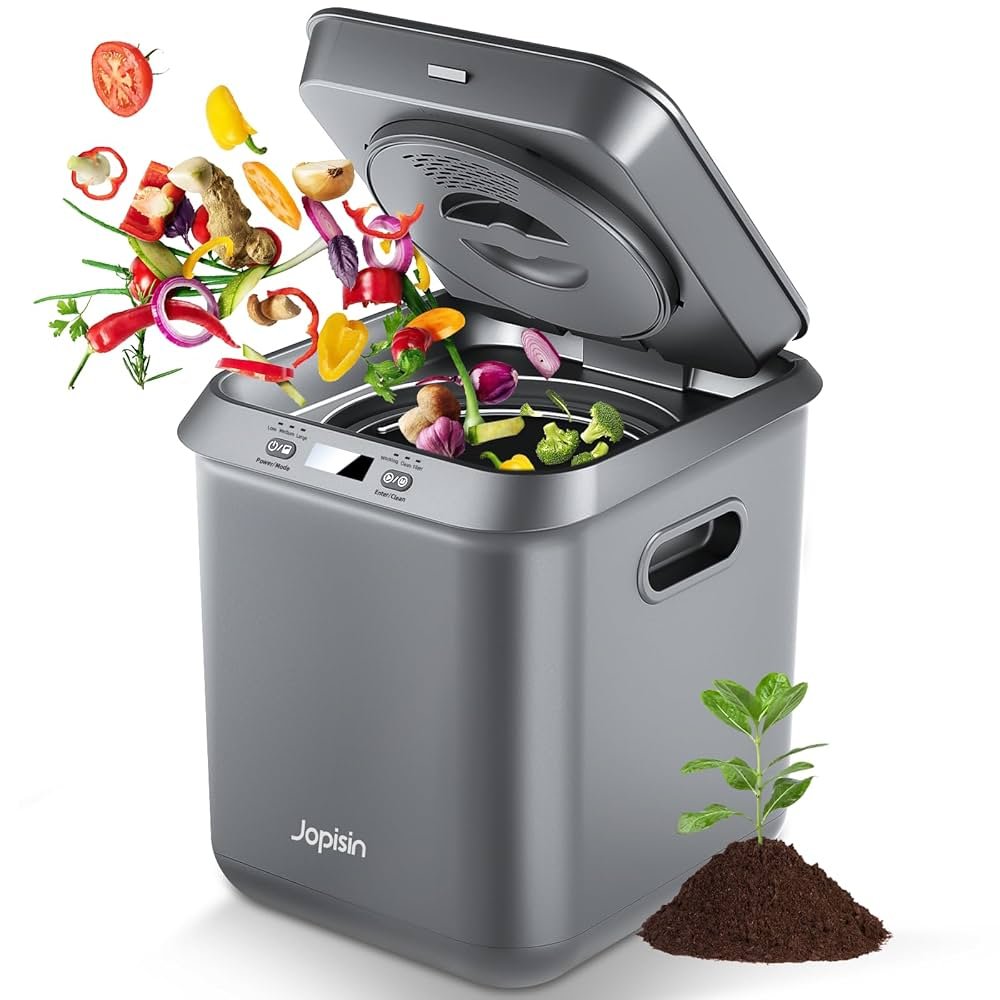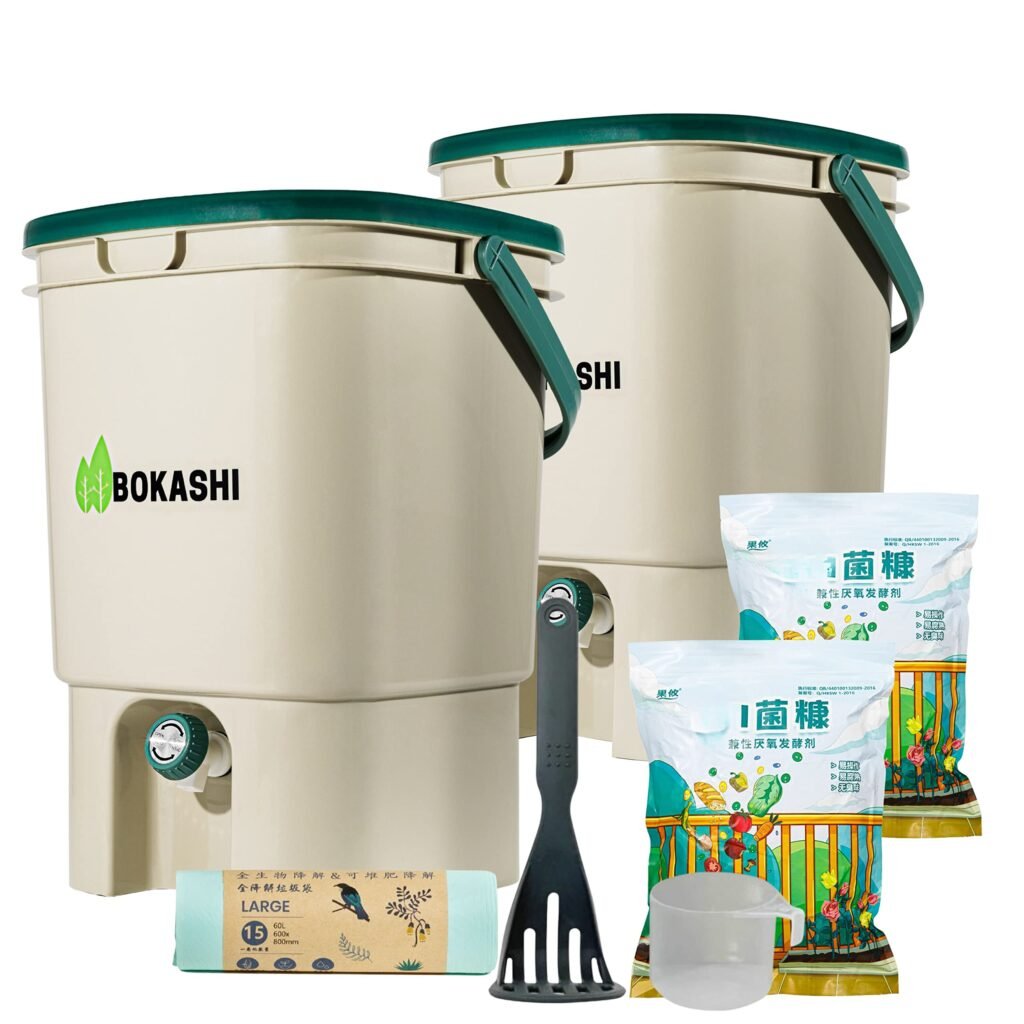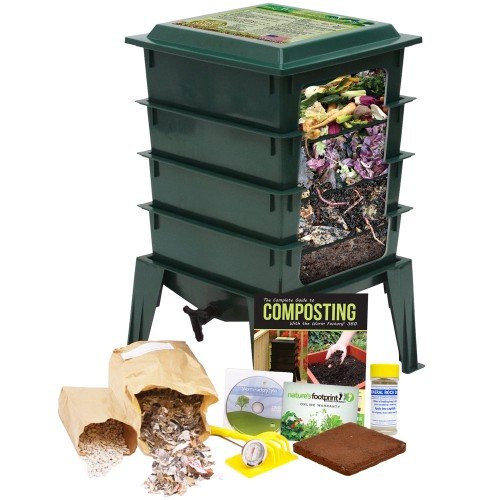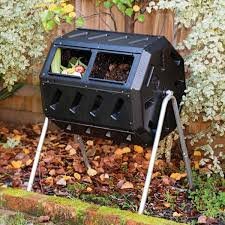Let’s be real for a second. You want to do the right thing. You see those banana peels, coffee grounds, and veggie tops piling up, and you know they could be doing so much more than just taking up space in a landfill. They could be creating black gold for your garden or houseplants.
But then reality hits you, right in the nose. It’s the dreaded compost smell. That funky, sour, vaguely rotten odor that can permeate a kitchen faster than you can say “fruit fly.” It’s the number one reason people give up on their composting dreams.
What if I told you that you could have it all? The eco-friendly satisfaction of composting without the biohazard-level stench? It’s not a fantasy. Thanks to some seriously clever engineering, a new generation of composting gadgets has arrived to solve this very problem. These aren’t your grandpa’s moldy backyard heap. These are sleek, efficient, and—most importantly—odor-free.
So, grab a cup of coffee (you’ll be composting the grounds later!), and let’s dive into the top 5 odor-busting composting gadgets that will turn your kitchen into a green-living powerhouse, not a smelly science experiment.
Table of Contents
1. The Game-Changer: Electric Composters
Imagine a device that looks like a fancy bread maker or air fryer, sitting quietly on your countertop. You toss in your dinner scraps, press a button, and go to bed. When you wake up, you have a dry, soil-like material that’s ready for your plants. That’s the magic of an electric composter.

How They Work (The Simple Science)
These high-tech gadgets don’t compost in the traditional, microbial sense. Instead, they use a three-stage process: drying, grinding, and cooling. A powerful heater dehydrates the food waste, eliminating the moisture that smelly bacteria love. Then, heavy-duty grinders pulverize the dried scraps into a fine powder. Finally, a cooling cycle brings it all back to room temperature. The whole process takes just a few hours.
Why They Don’t Smell
The secret is twofold. First, the rapid dehydration process stops rot before it can even begin. No rot, no smell. Second, these machines are completely sealed during operation and feature a carbon filtration system. Any potential odors that are generated are captured and neutralized by activated carbon before they ever have a chance to escape into your kitchen. It’s a closed-loop system designed for your nose’s happiness.
The Pros:
- Unbeatable Speed: Go from food scraps to finished product in as little as 3 to 8 hours.
- Ultimate Convenience: Just toss in your waste and push a button. It’s truly set-it-and-forget-it.
- Massive Volume Reduction: Reduces the volume of your food waste by up to 90%. That’s a lot less trash to take out!
- No Pests: The sealed unit means zero chance of attracting fruit flies, roaches, or other unwanted guests.
The Cons:
- The Price Tag: This is a premium gadget with a premium price. It’s an investment.
- Energy Use: It’s an appliance that needs to be plugged in, so it will consume electricity.
- Batch Size: These are designed for daily household waste, not for processing a massive haul from a garden cleanup.
- Not “True” Compost: The final product is more accurately described as a “dehydrated soil amendment.” It lacks the rich microbial life of traditional compost but is still fantastic for enriching soil.
Who It’s For: The tech-savvy apartment dweller, the busy family who values convenience above all, or anyone who wants the absolute fastest, cleanest, and most hassle-free composting experience possible and has the budget for it.
2. The Mad Scientist’s Choice: Bokashi Bins
If an electric composter is a high-tech shortcut, Bokashi is a brilliant bit of low-tech biology. Originating in Japan, this method doesn’t decompose your food waste—it ferments it. Think of it as pickling your kitchen scraps.

How They Work
A Bokashi system consists of an airtight bucket, often with a spigot at the bottom. You add your food scraps in layers, and after each layer, you sprinkle a special “Bokashi bran” over the top. This bran is inoculated with a cocktail of Effective Microorganisms (EM). Once the bin is full, you seal it tight and let it sit for about two weeks.
During this time, the microbes go to work, anaerobically (without oxygen) fermenting the waste. You’ll also need to drain the liquid that collects at the bottom every few days. This “Bokashi tea” is a potent, nutrient-rich liquid fertilizer for your plants (just be sure to dilute it!).
Why They Don’t Smell
The fermentation process itself prevents putrefaction. Instead of a rotten smell, a healthy Bokashi bin has a slightly sweet, pickled, or vinegary aroma that is fully contained by the airtight lid. When you open it to add more scraps, that’s the only smell you get, and it’s far from unpleasant.
The Pros:
- Handles Everything: Unlike most other methods, you can toss in meat, fish, dairy, and oily foods without any issues.
- Nutrient Preservation: The fermentation process preserves more of the nutrients from the original food waste.
- Affordable: The bins and bran are significantly cheaper than an electric composter.
- Creates Liquid Gold: The Bokashi tea is a fantastic, free fertilizer.
The Cons:
- Two-Step Process: This is a “pre-compost” method. After the two-week fermentation, the pickled material needs to be buried in your garden or added to a traditional compost pile to finish breaking down.
- Requires Supplies: You’ll need to continuously buy the Bokashi bran.
- The “Ick” Factor: The final product looks pretty much like pickled, partially preserved versions of what you put in. It’s not for the squeamish until it fully breaks down in the soil.
Who It’s For: The dedicated gardener with a place to bury the end product, anyone who wants to compost all of their food waste (including meat and dairy), and those looking for a budget-friendly but highly effective odor-free method.
3. Nature’s Perfect Recyclers: Advanced Worm Bins (Vermicomposters)
Forget the idea of a simple plastic tub full of dirt. Modern vermicomposting systems are cleverly designed, multi-level towers that make harvesting worm castings (a.k.a. black gold) a clean and simple process. You’re basically hiring a team of the world’s best recyclers: worms.

How They Work
These gadgets, like the popular Worm Factory 360, use a stackable tray system. You start with worms (typically Red Wigglers) and bedding in the bottom tray and begin adding food scraps. As the worms process the food and bedding, they turn it into nutrient-dense castings. Once the first tray is full, you add a new tray on top with fresh bedding and food. The worms, always seeking the fresh food source, migrate upwards through holes in the bottom of the tray, leaving the finished, beautiful compost behind in the lower tray for you to harvest.
Why They Don’t Smell
A healthy, well-managed worm bin should have absolutely no foul odor. It should smell like fresh, earthy forest soil. The key is maintaining an aerobic (oxygen-rich) environment. The design of these tower systems promotes airflow. Odors only become a problem if you overfeed the worms, if the bin becomes too wet (anaerobic), or if you add foods they can’t eat (like meat and dairy, which will rot).
The Pros:
- Highest Quality Compost: Worm castings are considered one of the best soil amendments on the planet, packed with nutrients and beneficial microbes.
- Educational and Fun: It’s a fascinating living ecosystem right in your home or on your balcony. Great for kids!
- Continuous Process: Unlike batch systems, you can continuously add food and harvest compost.
- Zero Electricity: It’s a completely natural, off-grid process.
The Cons:
- It’s a Pet: The worms are living creatures and have specific needs. There’s a learning curve to keep them happy.
- Dietary Restrictions: No meat, dairy, oily foods, or excessive citrus.
- Temperature Sensitive: They need to be kept from freezing in the winter and overheating in the summer.
- Potential for Pests: If mismanaged, they can attract fruit flies, but this is usually easy to control.
Who It’s For: The passionate gardener who wants the absolute best for their plants, families looking for a cool science project, and anyone who enjoys the idea of partnering with nature to reduce waste.
4. The Simple Upgrade: High-Tech Countertop Caddies
Okay, so this isn’t a full-blown composter, but it’s arguably one of the most important odor-busting gadgets you can own. This is your first line of defense. A good countertop bin is what bridges the gap between your cutting board and your main composting system (be it a curbside bin, a tumbler, or a Bokashi system).
How They Work
Forget that old yogurt container with the loose lid. Modern compost caddies are specifically engineered for odor control. They are typically made of stainless steel or ceramic and feature very tight-fitting lids. The real hero, however, is the activated carbon filter housed in the lid. This filter absorbs the smelly volatile organic compounds (VOCs) that food scraps release as they begin to break down. Some premium models even have motion-activated lids so you never have to touch a slimy handle.
Why They Don’t Smell
It’s a simple but effective one-two punch. The tight-fitting lid physically contains the odors, while the carbon filter actively traps and neutralizes any smelly molecules that try to escape. Many bins also feature aeration holes, which, combined with compostable liners, allow moisture to evaporate, preventing the soggy, anaerobic sludge that causes the worst smells.
The Pros:
- Affordable and Accessible: A great entry-level gadget for anyone.
- Keeps Kitchen Tidy: Contains scraps cleanly and prevents fruit fly infestations.
- Easy to Use and Clean: Most are dishwasher safe (minus the lid/filter).
- Universally Useful: An essential companion for any other composting method.
The Cons:
- Not a Final Solution: You still need a place to empty the caddy every few days.
- Ongoing Costs: The carbon filters and compostable liners need to be replaced periodically.
- Limited Capacity: They are meant for short-term storage only.
Who It’s For: Literally everyone who composts. Whether you’re a beginner or a seasoned pro, a high-quality, filtered countertop caddy is a non-negotiable tool for maintaining an odor-free kitchen.
5. The Active Approach: Tumbling Composters
If you have a bit of outdoor space—a patio, balcony, or backyard—a tumbling composter is a fantastic way to upgrade from a static, open-air pile. These are sealed drums mounted on a stand that allow you to easily mix and aerate your compost without a pitchfork.

How They Work
You add your kitchen scraps (“greens”) and yard waste like leaves or shredded cardboard (“browns”) into the drum. Then, every few days, you give it a good spin. This tumbling action is critical. It mixes the materials thoroughly and, most importantly, infuses the pile with oxygen. This oxygen fuels the aerobic bacteria that break down waste quickly and efficiently.
Why They Don’t Smell
The sealed design is the first line of defense, keeping odors contained and—crucially—keeping pests like raccoons and rats out. The second, and more important reason, is the aeration. By regularly tumbling the contents, you prevent the pile from becoming a dense, wet, anaerobic mess, which is the primary source of foul “swampy” compost smells. You’re actively creating the perfect conditions for odorless decomposition.
The Pros:
- Much Faster Than a Pile: Tumbling can produce finished compost in as little as 3-4 weeks under ideal conditions.
- Pest-Proof: The enclosed drum design is a fortress against critters.
- Less Labor Intensive: No back-breaking work turning a pile with a fork.
- Neat and Tidy: Contains the entire process, so there’s no messy pile in your yard. Many models have dual chambers, so you can let one side “cook” while you add fresh scraps to the other.
The Cons:
- Requires Outdoor Space: This is not an indoor gadget.
- Can Get Heavy: A full drum can be difficult to turn for some people.
- Requires Management: You still need to manage the proper ratio of greens to browns for it to work effectively.
- Batch Process: Once a chamber is full, you have to wait for it to finish before you can harvest it all.
Who It’s For: The homeowner with a yard who wants a faster and cleaner alternative to a traditional compost pile. It’s the perfect middle ground between countertop convenience and large-scale outdoor composting.
Frequently Asked Questions About Odor-Free Composting
You’ve read about the gadgets, but you’ve still got questions. That’s smart! Choosing the right composting system is a big decision. Here are answers to some of the most common questions we get about starting an odor-free composting journey.
Q: I’m a complete beginner and a little intimidated. What’s the easiest gadget to start with?
A: That’s a great question, and you’re not alone! The easiest, lowest-commitment entry point is definitely a High-Tech Countertop Caddy. It requires almost no management besides emptying it and changing the filter every few months. It lets you get into the habit of separating your food scraps without the pressure of managing a full system.
If you want a gadget that completes the entire process with the least amount of effort, the Electric Composter is the champion of simplicity. It’s truly a “set-it-and-forget-it” appliance. There’s no learning curve—if you can use an air fryer, you can use one of these.
Q: I live in a tiny apartment with no balcony or yard. What are my best options?
A: City dwellers, rejoice! You have fantastic options. Your best bet is an Electric Composter. It has a small countertop footprint, is completely sealed, and produces a dry, easy-to-store end product you can use for your houseplants.
A Bokashi Bin is another excellent choice for small spaces. The bin itself is compact and airtight. The main consideration is what to do with the fermented waste afterward. Many apartment dwellers donate it to a community garden, give it to a friend with a yard, or even bury it in a large soil container that they then use for patio gardening. A Worm Bin can also work well indoors, tucked into a closet or kitchen corner, as long as the temperature is stable.
Q: Are those expensive electric composters really worth the money?
A: This is the million-dollar question! The answer honestly depends on your lifestyle and priorities.
Think of it like this: you can wash your dishes by hand or buy a dishwasher. Both get the job done. An electric composter is the dishwasher of the composting world. If your main goals are maximum convenience, speed, no pests, no mess, and zero fuss, then for many people, the high price tag is absolutely worth it. You’re paying a premium to eliminate the time, labor, and learning curve of other methods.
However, if you’re on a tighter budget, enjoy a more hands-on process, or want to produce true, microbially-rich compost, then more affordable options like a Bokashi Bin or Worm Bin will give you incredible results with a little more personal involvement.
Q: What can I actually do with the finished stuff these gadgets produce?
A: You’re creating a powerful resource for anything that grows!
- Electric Composter Output: This dry, ground-up material is a “soil amendment” or “fertilizer.” Mix it into the soil of your houseplants, sprinkle it on your lawn, or work it into your garden beds to add a slow-release source of nutrients.
- Bokashi: The “Bokashi tea” you drain is a potent liquid fertilizer for all your plants (dilute it about 1 part tea to 100 parts water). After the fermented solids have been buried in soil for a few weeks, that soil becomes incredibly enriched and perfect for planting in.
- Worm Castings: This is “black gold” for gardeners. It’s one of the best natural fertilizers you can get. Mix it into potting soil, top-dress existing plants to give them a boost, or steep a handful in water overnight to make a “compost tea” to feed your garden.
- Tumbling Composter: This creates traditional, rich, earthy compost. It’s perfect for mixing into garden soil to improve its structure and fertility, using as a mulch around plants, or for making your own high-quality potting mix.
Q: Help! My “odor-free” composter has started to smell. What did I do wrong?
A: Don’t panic! A bad smell is simply your composter’s way of telling you that something is out of balance. It’s almost always an easy fix.
- If you have an Electric Composter: The number one cause of odor is a saturated carbon filter. Check the manufacturer’s guidelines and replace the filter. That usually solves it instantly.
- If you have a Bokashi Bin: If it smells truly rotten instead of like pickles or vinegar, it means oxygen got in or you didn’t add enough bran. Press the contents down firmly, add an extra handful of bran, and make sure the lid is sealed completely airtight.
- If you have a Worm Bin: A smelly worm bin is almost always too wet, which creates an oxygen-poor environment. Stop adding watery foods (like melon), gently fluff the bedding to introduce air, and add a generous amount of dry, shredded cardboard or newspaper to absorb the excess moisture.
- If you have a Tumbling Composter: A sour or ammonia-like smell is a classic sign that your ratio is off. You have too many nitrogen-rich “greens” (food scraps) and not enough carbon-rich “browns.” The fix is easy: add a lot of shredded cardboard, paper, or dry leaves and give it several good tumbles.
Your Odor-Free Future Awaits!
Composting doesn’t have to be a smelly chore. With the right gadget, it can be a clean, simple, and incredibly rewarding part of your daily routine. You can reduce your carbon footprint, eliminate food waste from your trash can, and create a superfood for your plants—all without plugging your nose.
Whether you crave the speed of an electric composter, the versatility of Bokashi, the natural magic of a worm bin, the outdoor efficiency of a tumbler, or simply the daily defense of a great countertop caddy, there’s a solution waiting for you.
So, what are you waiting for? It’s time to transform your kitchen waste from a stinky problem into a green solution. Choose the gadget that best fits your lifestyle and budget, and join the odor-free composting revolution today!
What are your biggest composting challenges or favorite tricks? Drop a comment below and let’s talk about it! For more reviews on gear designed to level up your life, keep exploring mindgearmen.com.


